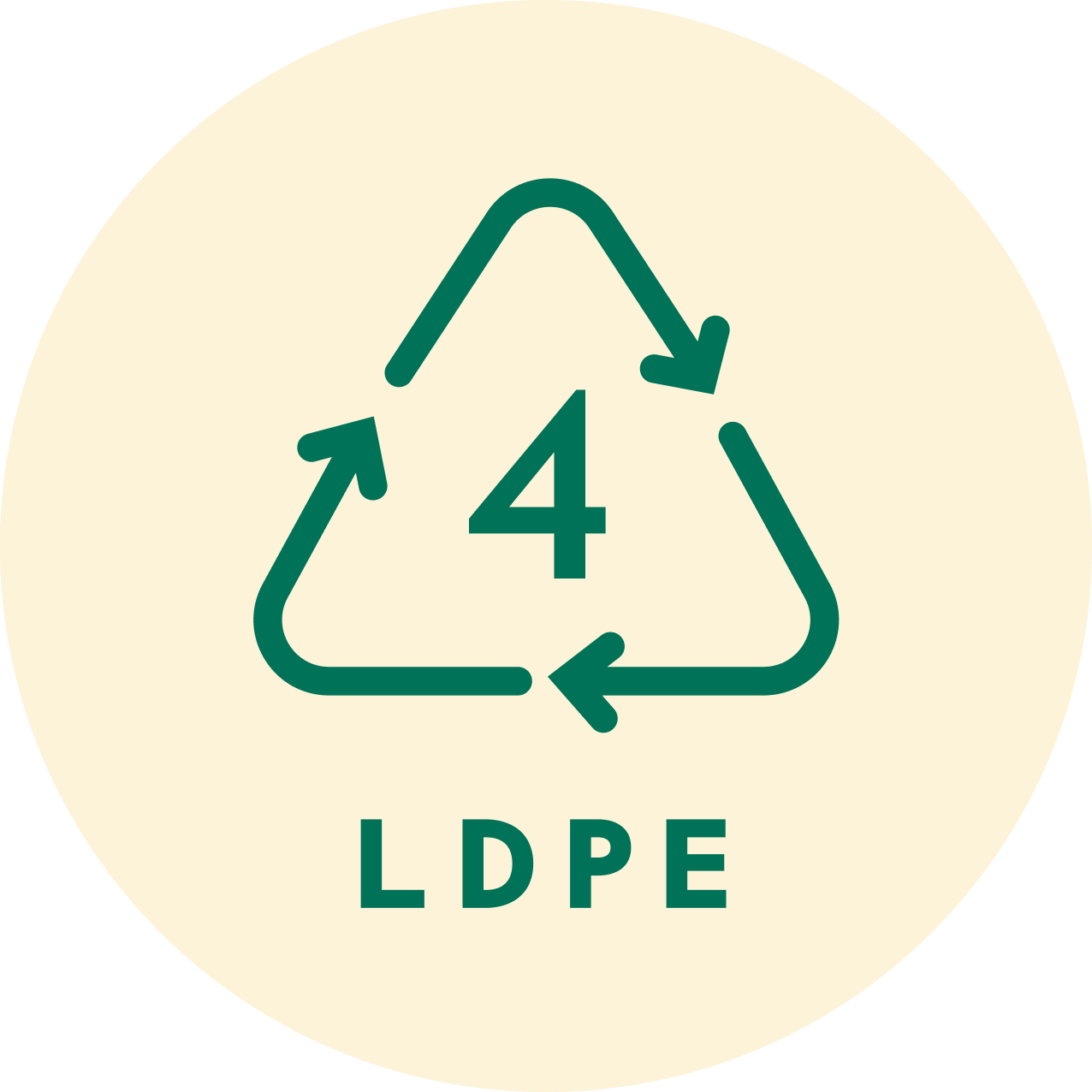Understanding Recycling Numbers: How To Recycle Plastics, Glass, and More
Understanding Recycling Numbers: How To Recycle Plastics, Glass, and More
Author: Grove Team
Although recycling requires significant water, energy, and time, it remains essential for reducing waste and conserving resources. To ensure recyclable items don’t end up in the landfill, read this guide on recycling different materials such as plastic, glass, aluminum, and paper.
How to recycle plastic packaging
Unlike glass, aluminum, and paper, plastic can only be recycled 2–3 times before it breaks down and becomes unusable and only has a recycling rate of 5% (source). Because plastic is tricky to work with, it’s important to maximize plastic’s recyclability potential by:
Always removing labels and cleaning the packaging thoroughly
Focusing on recycling the plastic numbers that you know your recycling center can accept on recycling
Removing pumps, droppers, sprayers, and closures: These are not recyclable and should always go in the trash
Removing flexible plastics (e.g. plastic bags and films): These clog recycling machines if loose. Some curbside services accept them if bundled into a basketball-sized bag; otherwise, drop them at a store recycling program or dispose of them in the trash.
Removing bioplastics: These are compostable but can contaminate recycling streams. Check packaging to see if it can be composted and put it in the trash if you’re unsure.
Decoding plastic recycling numbers
When you look at the bottom of a product, you’ll likely see a familiar-looking recycling symbol with a number inside. Understanding plastic recycling numbers can help you make more informed decisions about how to recycle different items in your area. Here’s a breakdown of the numbers and their common uses, courtesy of the Almanac:
#1: PET or PETE (Polyethylene Terephthalate)
Found on water and soda bottles, salad dressing containers, and microwavable food trays. This hard plastic is often recyclable (depending on your local facilities) and can be repurposed into carpets, furniture, or new containers. More than likely, you can toss this in the recycling bin.
#2: HDPE (High-Density Polyethylene)
Typically used in cleaning product bottles, shampoo containers, milk jugs, and yogurt tubs. It can sometimes be recycled into items like floor tiles, fencing materials, detergent bottles, or pens, but not all recycling centers are equipped to handle this material. Check with your local center.
#3: V or PVC (Polyvinyl Chloride)
Common in mouthwash bottles, cooking oil containers, and clear food packaging. PVC is rarely recycled due to its toxic composition but, when processed, can be repurposed into cables or paneling. If not accepted by your local center, these should go in your trash bin or be repurposed at home.
#4: LDPE (LowDensity Polyethylene)
Found in soft plastics like bread bags, furniture, carpet, and clothing. While it’s occasionally recycled into trash can liners, floor tiles, or envelopes, it is often not accepted due to how easily it degrades. If not accepted by your local center, these should go in your trash bin or be donated.
#5: PP (Polypropylene)
Used in items like ketchup bottles, medicine containers, syrup bottles, and drinking straws. It can be recycled into brooms, ice scrapers, or rakes. Check with your local center before recycling.
#6: PS (Polystyrene)
Found in disposable cups, plates, cutlery, egg cartons, and takeout containers. Though rarely accepted, it can be recycled into foam insulation, rulers, or light switch plates. If not accepted by your local center, these should go in your trash bin.
#7: Miscellaneous
This category includes plastics like water jugs, nylon, and other items not covered by #1–6. These are rarely recyclable and, if processed, are often turned into specialty or custom items. If not accepted by your local center, these should go in your trash bin.
To ensure you’re recycling correctly, search for “Recycling guide + [Your ZIP Code]” or visit your local recycling provider’s website to confirm which recycling numbers they accept.
How to recycle glass
Glass is unique because it can be recycled endlessly without losing quality. However, not all recycling programs in the U.S. accept glass, so check if your curbside service does.
Tips for recycling glass:
Remove labels from the container
Ensure the container is clean and free of residue
Sort by color if required (refer to your recycling provider's guidelines).
Remove any glass items smaller than your hand which may not be recycled; consider local store take-back programs or services like Recyclops or Terracycle.
How to recycle aluminum
Aluminum is also infinitely recyclable. It’s a commonly recycled item in the US and most curbside pickup services take it.
Tips for recycling aluminum:
Clean thoroughly before placing it in the recycling bin
Remove non-aluminum parts and labels
Aluminum foil can be recycled in some areas, but check with your local recycling provider
How to recycle cardboard and paper
Cardboard and paper can typically be recycled 5–7 times before the fibers become unusable. Most US recycling programs accept these items in curbside bins, but proper preparation is key.
Tips for recycling cardboard and paper:
Keep it clean and dry: Wet or food-contaminated cardboard cannot be recycled. If it has food residue, consider composting it if your city offers curbside composting; otherwise, it must go in the trash.
Remove non-recyclable materials: Peel off exterior tape and labels, as these are often plastic and can prevent the entire box from being recycled. Dispose of tape and labels in the trash.
Sources:
1 Almanac. (n.d.). Which plastics are recyclable by number? The Old Farmer's Almanac. Retrieved December 18, 2024, from https://www.almanac.com/which-plastics-are-recyclable-number









